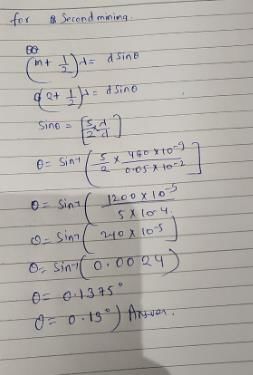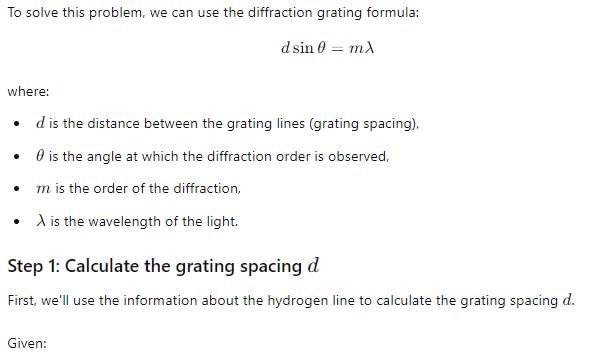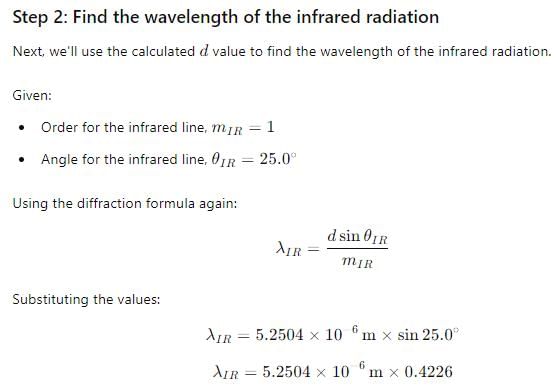Diffraction MCQ Level -2 - Physics MCQ
10 Questions MCQ Test Topic wise Tests for IIT JAM Physics - Diffraction MCQ Level -2
Red light of wavelength 644 nm, from a point source, passes through two parallel and narrow slits which are 1.00 mm apart. Determine the distance between the central bright fringe and the third dark interference fringe formed on a screen parallel to the plane of the slits and 1.00 m away.
Which of the following effects could not be observed for sound waves in air?
In Double Slit Fraunhofer Diffraction, some orders of interference pattern are missing. It is called _____
Determine the ratio of the wavelengths of two spectral lines if the second-order image of one line coincides with the third-order image of the other line, both lines being examined by means of the same grating.
A double-slit experiment is done in the usual way with 480-nm light and narrow slits that are 0.050 cm apart. At what angle to the straight-through beam will one observe (A) the third-order bright spot and (B) the second minimum from the central maximum?
How shall a diffraction pattern change when white light is used instead of a monochromatic light?
A spectrum of the Sun’s radiation in the infrared region is produced by a grating. What is the wavelength being studied, if the infrared line in the first order occurs at an angle of 25.0° with the normal, and the fourth-order image of the hydrogen line of wavelength 656.3 nm occurs at 30.0°?
Green light of wavelength 500 nm is incident normally on a grating, and the second- order is diffracted 32.0° from the normal. How many lines/cm are marked on the grating?
What is the effective distance between the source of light and the screen in Fraunhofer Diffraction?

























